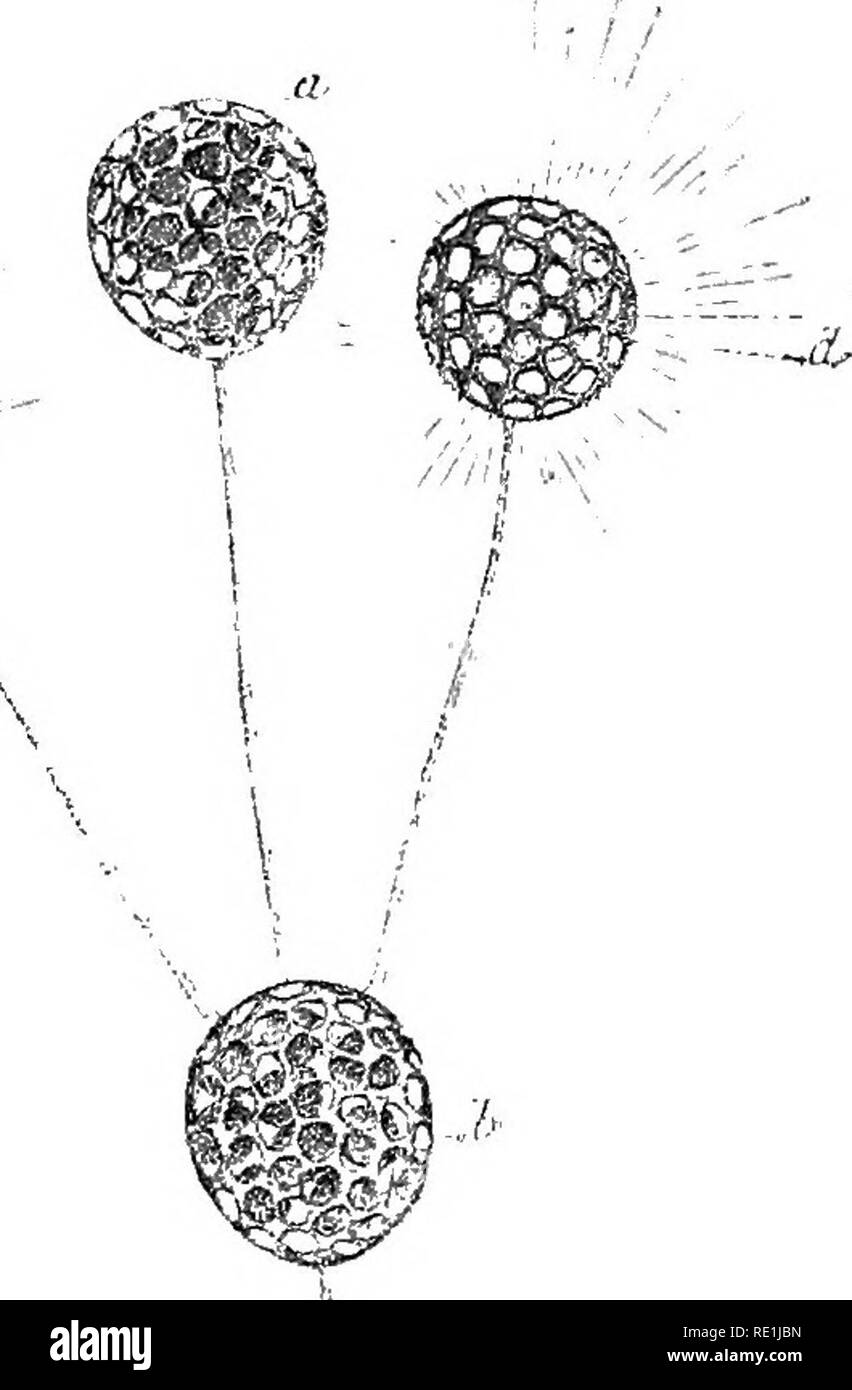. The British freshwater Rhizopoda and Heliozoa. Rhizopoda; Heliozoa; Freshwater animals. CLATHRPLINA ELEGANS. 61 presumably the result of binar}^ division,^ are not infrequently seen in one capsule. "i> The formation of zoospores is also of not uncommon occurrence. Miss Poulke has described the formation. Fig. 192.—Clathrulina elegans. Colony of four individuals, a, b. Capsules containinsr embryos, c, d. Individuals ivith pseudopodia extended. (After G-reeff.) of free swimming " germs," which perhaps are swarm spores or gametes, and states that they are liberated from the ca

Image details
Contributor:
The Book Worm / Alamy Stock PhotoImage ID:
RE1JBNFile size:
7.1 MB (174.2 KB Compressed download)Releases:
Model - no | Property - noDo I need a release?Dimensions:
1280 x 1952 px | 21.7 x 33.1 cm | 8.5 x 13 inches | 150dpiMore information:
This image is a public domain image, which means either that copyright has expired in the image or the copyright holder has waived their copyright. Alamy charges you a fee for access to the high resolution copy of the image.
This image could have imperfections as it’s either historical or reportage.
. The British freshwater Rhizopoda and Heliozoa. Rhizopoda; Heliozoa; Freshwater animals. CLATHRPLINA ELEGANS. 61 presumably the result of binar}^ division, ^ are not infrequently seen in one capsule. "i> The formation of zoospores is also of not uncommon occurrence. Miss Poulke has described the formation. Fig. 192.—Clathrulina elegans. Colony of four individuals, a, b. Capsules containinsr embryos, c, d. Individuals ivith pseudopodia extended. (After G-reeff.) of free swimming " germs, " which perhaps are swarm spores or gametes, and states that they are liberated from the capsule enclosed in thin sacs from which they quickly emerge. Although normally uni-nuclear, individuals are often found with several nuclei, due to the animal being in process of division.. Please note that these images are extracted from scanned page images that may have been digitally enhanced for readability - coloration and appearance of these illustrations may not perfectly resemble the original work.. Cash, James, 1839-1909; Hopkinson, John, 1844-1919. joint author; Wailes, George Herbert, 1862-. London, Printed for the Ray Scociety